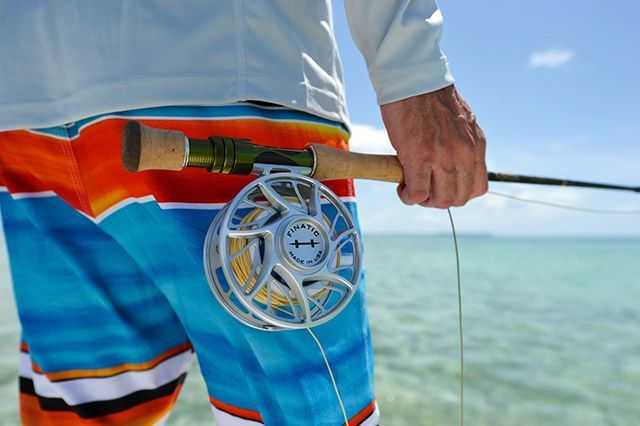
By: Capt. Jon Fetter
[dropcap]F[/dropcap]ly reels, like all other reels, come in a variety of sizes from the ultra small 2/3 weight for trout to the very large 16/18 weight for marlin. They also vary in cost from about $15 to well over $1,000. My suggestion to you is to purchase the best reel you can afford. For freshwater panfish, the reel is not really that important. But for backcountry and offshore fishing, you might want to consider a quality fly reel.
Fly reels are mostly single action reels, which means they contain no gears or gearing mechanism. The spool makes one complete turn for every crank of the reel. There are also multiplier reels that turn the spool two to three times per handle crank. This is good for retrieving long lengths of line in a hurry. They do make automatic retrieve reels, and these are okay for freshwater, but I would not suggest them for saltwater. The basic components of a fly reel are the reel seat, spool, drag set, handle and spool release.
The three main features of a fly reel that you should consider are line capacity, drag and weight. Saltwater fish make much longer runs than their freshwater counterparts, so you want a reel that can hold a minimum of 150 yards of backing. These are considered large arbor reels. When fishing for tarpon, you probably want more like 250 or 300 yards. Some of the largest offshore reels can hold up to 600 yards of backing.
The drag on a fly reel is a very important feature on single action as well as multipliers. Even though the drag may never be used when fighting a fish, it is necessary to the angler to pull off line when preparing to cast. Without the drag, the spool would continue to turn, resulting in a backlash similar to baitcasting reels. The drags are usually one of two types: disk or ratchet. The disk puts pressure on the spool, while the ratchet clicks as the spool rotates. Both are adjustable by turning a knob on the side of the reel housing. When considering a drag for fly reels, choose one with a large surface area. The more drag surface, the more even drag pressure. The drags can be made of different types of surfaces, such as cork, graphite and composite. The better the drag mechanism, the greater the price.
With regards to weight, when you are sight fishing for tarpon, it isn’t that important; but when casting to mangroves all day, weight might play a bigger role. You might make hundreds of casts, and that can get a little tiring. The reels themselves are for the most part pretty light, so selection shouldn’t be too tough.
Select a fly reel for your needs. Don’t use a 5/6 weight to chase tarpon off the beaches. You will be undermanned and won’t stand a chance. On the flip side, don’t use an 11 weight for trout on the flats. The fight will be over soon and won’t be much of a challenge. The best all-around size is probably an 8 weight. Perfect for redfish and snook, but large enough to handle small tarpon.